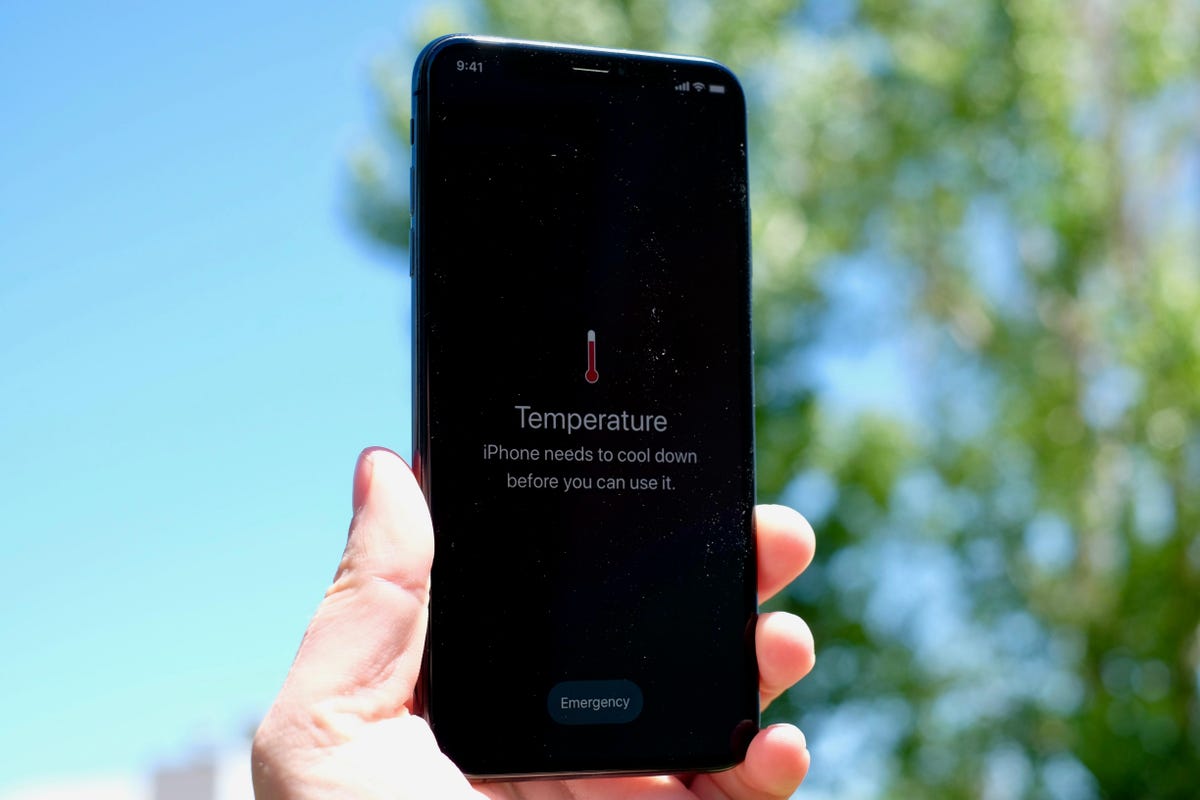Why iPhones Get Hot: Unveiling Smartphone Heat Secrets
IPhones and other smartphones get hot due to intensive processing tasks and environmental factors. Excessive heat can impact battery life and device performance.
Smartphones, including iPhones, frequently manage complex tasks that generate heat. Activities such as gaming, streaming, and using GPS increase CPU and GPU workload. This intensive processing produces heat, causing the device to warm up. Environmental factors also play a role.
Direct sunlight or high ambient temperatures can elevate the phone’s temperature. Poor ventilation, like keeping the phone in a tight pocket, can prevent heat dissipation. Software issues and rogue apps may cause the CPU to overwork. Ensuring proper ventilation, updating software, and avoiding excessive usage during high temperatures can help manage and reduce overheating.
The Heat Phenomenon In Iphones
iPhones and other smartphones often get hot. This heat can cause worry. Knowing why helps users stay calm. Let’s explore what causes this heat.
Common Situations Leading To Overheating
- Extended Gaming: Games push the phone’s limits. Graphics and processing demand high power.
- Video Streaming: Watching videos for long times stresses the hardware.
- Charging: Charging the battery generates heat.
- Background Apps: Many apps running together can cause heat.
- High Ambient Temperature: Using the phone in hot weather adds to the heat.
Iphone Design And Heat Generation
iPhones have powerful processors. These processors do many tasks at once. This multitasking generates heat.
The sleek design of iPhones means less space for heat to escape. The metal body can feel hot as it absorbs heat.
Batteries in iPhones also generate heat. The battery’s chemical reactions produce energy, and some of this energy is heat.
Heat Management in iPhones
Apple uses advanced technology to manage heat. iPhones have thermal management systems. These systems keep the temperature in check.
Software updates often include improvements in heat management. Apple works to make iPhones run cooler with each update.
Tips to Prevent Overheating
- Avoid playing games for long periods.
- Reduce screen brightness.
- Close background apps when not in use.
- Charge your phone in a cool place.
- Update your phone’s software regularly.
Following these tips can help your iPhone stay cool and perform well.
Processor Demands And Thermal Output
Smartphones today are powerful. They run many tasks at once. This can make them hot. The processor is a key part of this. It works hard to keep your phone fast. This work creates heat.
Cpu And Gpu Workload Effects
The CPU (Central Processing Unit) and GPU (Graphics Processing Unit) are vital. They handle all the phone’s tasks. The CPU manages general tasks. The GPU handles graphics and video.
When these units work hard, they produce heat. This heat can make your phone feel hot. Playing games or using apps can increase CPU and GPU activity. This boosts thermal output.
High-performance Applications And Heat
High-performance apps need more power. These include video editing apps and 3D games. They push the CPU and GPU to their limits. This extra work generates more heat.
Using these apps for a long time can cause overheating. Your phone’s cooling system tries to manage this heat. But, if the heat is too much, the phone can get very hot.
Battery Heat: Charging And Usage Patterns
Smartphones, including iPhones, often get hot due to various reasons. One major cause is the battery. The way you charge and use your phone impacts battery heat. Understanding these patterns can help you manage your phone’s temperature better.
The Impact Of Fast Charging
Fast charging is convenient, but it generates more heat. When a phone charges quickly, it draws more power, causing the battery to heat up. This is especially noticeable in the first phase of charging when the battery is low.
Fast charging can be beneficial for quick top-ups. However, it stresses the battery more than regular charging.
| Charging Method | Heat Generation |
|---|---|
| Fast Charging | High |
| Regular Charging | Moderate |
Extended Usage And Its Thermal Implications
Using your smartphone for long periods also heats the battery. Activities like gaming, video streaming, and using GPS can make your phone hot.
These tasks require more processing power, leading to increased heat. Background apps running continuously contribute to this as well.
- Gaming
- Video streaming
- GPS navigation
- Background apps
It’s important to take breaks and close unused apps to keep your phone cool.
Understanding the causes of battery heat can help you manage your phone’s performance and longevity.

Credit: www.cnet.com
Environmental Factors Affecting Iphone Temperature
iPhones and other smartphones can get hot. Many factors affect their temperature. Environmental factors play a big role. Let’s explore how the surroundings influence your device.
Ambient Temperature Influences
The ambient temperature greatly affects your iPhone. High temperatures make your phone heat up quickly. Your device struggles to cool down in hot weather. This leads to overheating.
Cold environments also impact your phone. Low temperatures can make the battery work harder. This can cause unexpected shutdowns and performance issues.
| Temperature Range | Effect on iPhone |
|---|---|
| Below 0°C (32°F) | Battery drains faster |
| 0°C to 35°C (32°F to 95°F) | Optimal performance |
| Above 35°C (95°F) | Risk of overheating |
Sun Exposure And Device Overheating
Sun exposure is a major heat source for iPhones. Direct sunlight causes your device to heat up. The phone’s surface absorbs the sun’s rays, leading to higher temperatures.
Leaving your phone in a car or on a windowsill can be harmful. These places trap heat and increase the risk of overheating. Always keep your device in a shaded area.
- Use a phone case to minimize sun exposure.
- Avoid placing your phone on hot surfaces.
- Turn off unnecessary apps to reduce heat.
Keep these tips in mind to protect your device. A cooler phone lasts longer and performs better.
Material And Construction: Heat Dissipation Challenges
Smartphones, including iPhones, often get hot due to their material and construction. The design and materials used play a significant role in heat management. Understanding these factors can help you better manage your device’s temperature.
Aluminum Casing And Heat Conduction
Many smartphones use aluminum casings. Aluminum is good at conducting heat. This property helps in spreading heat evenly. However, it can also make the phone feel hot to the touch.
Aluminum’s conductive nature is both a boon and a bane. It helps in heat dissipation but also makes the exterior warm quickly. This can be uncomfortable during prolonged use.
| Material | Heat Conductivity | Impact on Device |
|---|---|---|
| Aluminum | High | Even heat distribution, but hotter exterior |
| Plastic | Low | Less heat conduction, cooler exterior |
Internal Spacing And Component Layout
The internal layout of a smartphone affects heat management. Components are packed tightly in modern phones. This compact design leaves little room for air circulation.
Heat from the CPU, GPU, and battery needs an escape route. Limited spacing makes this challenging. Poor air circulation leads to increased internal temperatures.
- Tight spacing leads to heat buildup.
- Important components generate significant heat.
- Limited air circulation hinders cooling.
Manufacturers strive to balance performance and heat management. They use various techniques to optimize internal layouts for better cooling.

Credit: www.reddit.com
Software Issues Leading To Overheating
Ever wondered why your iPhone or smartphone feels hot? Often, the cause lies within the software. Software issues can make your phone work harder, causing heat.
Background Processes And System Strain
Background processes can stress your phone. Apps running in the background use resources. These resources include CPU, RAM, and battery power. When too many apps run, your phone works harder. This extra work generates heat.
Some apps may not close properly. They keep running and drain resources. Over time, this can cause your phone to overheat. You may not even notice these apps running. Checking and closing unused apps can help reduce heat.
Software Bugs And Heat Concerns
Software bugs can also lead to overheating. Bugs are errors in software code. They cause apps to behave incorrectly. Some bugs make apps use more power than needed. This power usage generates extra heat.
App updates often fix bugs. Keeping your phone’s software updated is essential. New updates can improve performance and reduce heat. If an app frequently crashes, it may have bugs causing heat. Consider uninstalling such apps to keep your phone cool.
| Software Issue | Impact on Heat | Solution |
|---|---|---|
| Background processes | Increased system strain | Close unused apps |
| Software bugs | High power usage | Update or uninstall apps |
Keeping your phone free of unnecessary background processes and updated software can help reduce overheating. These small steps make a big difference in managing your phone’s temperature.
Protective Cases And Overheating
Many iPhone and smartphone users notice their devices getting hot. One reason could be the protective cases they use. Protective cases can trap heat. This can cause the phone to overheat. Let’s explore why this happens and how to choose the right case.
Case Materials And Thermal Insulation
Not all cases are made the same. Some materials trap heat more than others. Common case materials include:
- Silicone: Flexible but can trap heat.
- Plastic: Durable but may insulate heat.
- Leather: Stylish but can limit airflow.
- Metal: Conducts heat but might make the phone feel hotter.
These materials can affect how well your phone dissipates heat. For instance, metal cases conduct heat. This might make your phone feel hotter. On the other hand, silicone and plastic can insulate heat, trapping it inside.
Choosing The Right Case For Heat Management
Picking the right case can help manage your phone’s temperature. Here are some tips:
- Look for cases with ventilation: Some cases have air vents.
- Choose lighter colors: Dark colors absorb more heat.
- Avoid bulky cases: Thicker cases can trap more heat.
- Consider hybrid cases: These use two or more materials.
Hybrid cases might use a hard shell with a silicone interior. This can provide both protection and better heat dissipation. Remember, the goal is to keep your phone cool. A cooler phone performs better and lasts longer.
Troubleshooting And Preventing Iphone Overheating
iPhones and other smartphones can sometimes get hot. This can be worrying. Let’s explore ways to troubleshoot and prevent this issue.
Tips For Maintaining Optimal Temperatures
Keeping your iPhone at the right temperature is important. Here are some tips:
- Avoid direct sunlight: Keep your phone out of direct sunlight.
- Close unused apps: Too many apps can make your phone hot.
- Remove the case: If your phone is hot, take off the case.
- Lower screen brightness: High brightness can heat up your phone.
- Update your software: Latest software can fix overheating issues.
When To Seek Professional Help
Sometimes, you need expert help. Here are signs to watch for:
| Sign | Action |
|---|---|
| Phone shuts down | Visit a service center |
| Battery drains quickly | Consult a technician |
| Phone feels too hot | Seek professional help |
Following these tips can help keep your iPhone cool. If problems persist, don’t hesitate to get professional help.

Credit: www.reddit.com
Frequently Asked Questions
How Do I Stop My Iphone From Getting So Hot?
To stop your iPhone from overheating, close unused apps, lower screen brightness, disable background app refresh, and avoid direct sunlight.
Do Iphones Overheat More Than Samsung?
IPhones and Samsung phones can both overheat. The likelihood depends on usage, environment, and specific models. Regular updates and proper care help manage this issue.
How To Make An Iphone Cool Down?
Turn off unused apps and features. Remove the case. Keep it in a cool, shaded place. Avoid direct sunlight. Reduce screen brightness.
Why Is My Phone Overheating So Quickly?
Your phone may overheat due to excessive app usage, background processes, poor ventilation, or a faulty battery. Consider closing unused apps and keeping the software updated.
Conclusion
Smartphones, including iPhones, get hot due to various factors like heavy usage and software issues. Proper care can help prevent overheating. Regular updates, avoiding intense multitasking, and using quality chargers are essential. By understanding these causes, you can maintain your device’s performance and longevity.
Keep your smartphone cool for optimal functionality.
